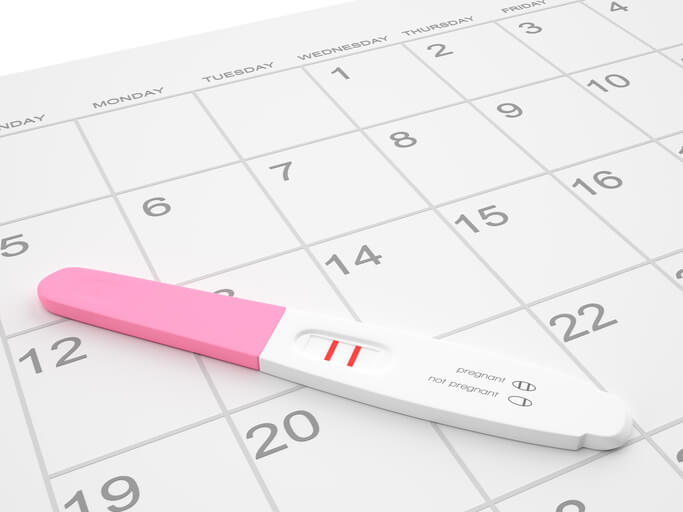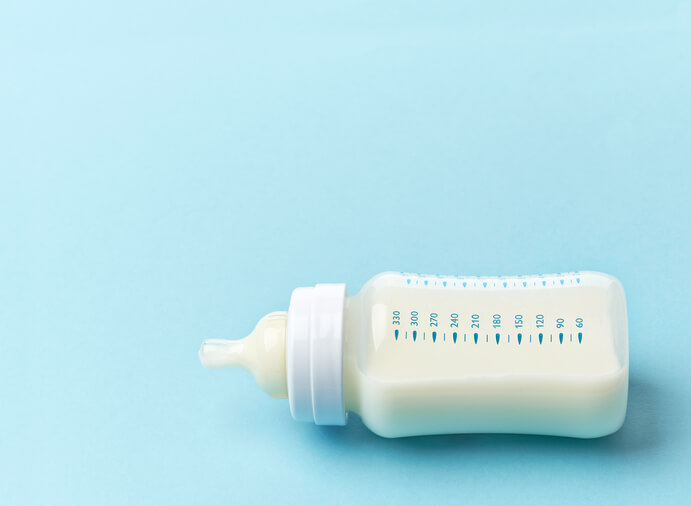When you begin the surrogacy process, there’s a lot of learning to be done. Not only will you need to learn all about how surrogacy works and how each professional will help you complete your surrogacy, but you may find that these professionals and any support groups you become a part of toss around acronyms that you’ve never heard of.
The medical surrogacy process can be complicated, with long medical terms that don’t roll off the tongue quite as easily as some might hope. But, if you don’t know the shorthand for these terms, you might become confused.
To help you out, we’ve defined some of the more common surrogacy terms that you need to know, whether you’re an intended parent or prospective surrogate.
1. RE = Reproductive Endocrinologist
A reproductive endocrinologist is the fertility specialist who assists intended parents through their infertility struggles. This will likely be one of the first professionals intended parents interact with. After they decide to pursue surrogacy, a reproductive endocrinologist will work with the intended parents and the surrogate to coordinate the embryo creation and transfer process.
2. OB = Obstetrician; OB/GYN = Obstetrician/Gynecologist
After a healthy pregnancy is confirmed by the reproductive endocrinologist, the OB/GYN is the professional who will work with the surrogate throughout her pregnancy to make sure she and the unborn baby are healthy.
3. ART = Assisted Reproductive Technology
Assisted reproductive technology is the vast term that encompasses all methods of assisted reproduction, including surrogacy, in-vitro fertilization, gamete donation and more.
4. IVF = In Vitro Fertilization
IVF refers to the ART technique of retrieving mature eggs and sperm and then fertilizing embryos in a lab.
5. AI = Artificial Insemination
This is the process of injecting semen into the vagina or uterus through a method other than sexual intercourse. While not used in gestational surrogacies, some traditional surrogates do complete at-home inseminations (AHI) in this manner.
6. IP(s) = Intended Parent(s)
The intended parents are the people who are trying to have a biologically related child through surrogacy. More specific terms include:
7. IF(s) = Intended Father(s)
8. IM(s) = Intended Mother(s)
9. PIF = Potential Intended Father
10. PIM = Potential Intended Mother
11. PIP = Potential Intended Parent
12. TS = Traditional Surrogate
A traditional surrogate is a woman who is genetically related to the child that she carries, usually through donating her eggs as part of the IVF process.
13. GC = Gestational Carrier
A gestational carrier (or gestational surrogate) is a woman who carries the intended parents’ child. She is not genetically related to the baby.
14. BCP = Birth Control Pills
Birth control pills are sometimes used in surrogacy when a fresh embryo is created. A surrogate will take the pills to coordinate with the intended mother’s or egg donor’s cycle before transfer.
15. E2 = Estradiol
Estradiol is an estrogen medication that surrogates take to prepare for the embryo transfer, mainly to help grow the lining of the uterus.
16. LH = Luteinizing Hormone
Luteinizing hormone, also known as follicle stimulating hormone (FSH), is closely monitored during the surrogacy process. It’s a hormone that’s secreted by the pituitary gland to stimulate the growth of the ovarian follicle in the development of eggs and control the menstrual cycle.
17. P4 = Progesterone
Progesterone is a hormone that maintains pregnancy by preparing a woman’s body and regulating the monthly menstrual cycle. Surrogates take progesterone supplements to prepare the uterine lining.
18. PIO = Progesterone in Oil
This is another progesterone supplement.
19. SubQ = Subcutaneous Injections
These injections are the common way that pregnancy and preparation hormones are administered to prospective surrogates and women who have their eggs retrieved.
20. HSC = Hysteroscopy
A hysteroscopy is a procedure that allows a doctor to look closely at a woman’s uterine lining. It can be used to diagnose infertility or diagnose any difficulty in a surrogate’s ability to successfully carry a baby.
21. CM = Cervical Mucus
Cervical mucus is a good representation of a surrogate’s fertility and usually has to reach a certain level before an embryo transfer can occur.
22. ENDO = Endometriosis
Endometriosis is a condition where tissue that normally lines the uterus grows outside the uterus instead. In many cases, those with endometriosis struggle with fertility problems. It may even be the reason that they turn to surrogacy.
23. ET = Embryo Transfer
The embryo transfer is completed by the fertility clinic once a surrogate’s body is deemed ready to accept an embryo.
24. FET = Frozen Embryo Transfer
Rather than a fresh embryo transfer, this kind of transfer involves a frozen embryo, usually left over from intended parents’ previous IVF treatments.
25. DE = Donor Egg
A donor egg is used to create an embryo for an intended parent who may be a single man, a same-sex male couple or an intended mother whose eggs are not viable for healthy embryos.
26. ED = Egg Donor/Donation
This is an acronym used when a surrogacy process includes an egg donation.
27. LMP = Last Menstrual Period
A surrogate must be aware of her LMP, which is the last time her period started, so that fertility specialists can know when she is most fertile and able to accept a transferred embryo. Usually, a fertility clinic tracks this closely.
28. CD = Cycle Day
A cycle day is the first day of a woman’s menstrual cycle. The first day of her period is Day 1.
29. 2WW = 2 Week Wait
The two-week wait refers to the time between when an embryo is transferred into the surrogate’s uterus and when she can be tested for a positive pregnancy.
30. DP3DT = Days Post 3-Day Transfer
Many fertility clinics will either transfer an embryo three days after fertilization or five days after fertilization, depending on how the embryo is developing. Surrogates use this term to mark the days after a transfer is complete.
31. DP5DT = Days Post 5-Day Transfer
This is another acronym to mark days after a transfer is completed.
32. DPT = Day Post Transfer
This is a more general acronym for post-transfer day tracking.
33. PET = Post-Embryo Transfer
Again, this is another term for the time period after a transfer is complete.
34. BETA = Blood Test for Pregnancy
BETA hCG levels are the chemical and blood levels that determine if a surrogate is pregnant. Surrogates and fertility clinics will track their BETA levels; while an increasing BETA level means a surrogate is pregnant, a declining BETA level means a surrogate is not pregnant.
35. hCG/HCG = Human Chorionic Gonadotropin
HCG is the hormone tested for during a blood test for pregnancy (BETA), as it’s the hormone created by the placenta during pregnancy.
36. HPT = Home Pregnancy Test
While fertility clinics and intended parents prefer the absoluteness of a blood pregnancy test completed at the clinic, some surrogates take home pregnancy tests in the days leading up to their BETA to see if their positive pregnancy read gets stronger.
37. POAS = Pee on a Stick
This is another acronym for a home pregnancy test.
38. BFN = Big Fat Negative
This is a term used more by surrogates than by a fertility clinic, as it’s an acronym for a negative pregnancy test.
39. BFP = Big Fat Positive
On the other hand, a BFP is a positive pregnancy test.
40. PG = Pregnant
This is an acronym surrogates use to describe where they are at in their surrogacy journey, either after they complete a pregnancy test or otherwise.
41. US or U/S = Ultrasound
Ultrasounds are completed at various stages in the surrogacy process to make sure a baby is developing correctly.
42. CB = Cycle Buddy
A cycle buddy is the woman or women that surrogates share their infertility treatment cycle with. Surrogates find cycle buddies either through their fertility clinics or surrogate support groups and support each other through all stages of their surrogacy process.
43. CVS = Chorionic Villus Sampling
This sampling is a prenatal test conducted to diagnose chromosomal abnormalities, like Down syndrome and other genetic disorders. Fertility clinics will usually test several embryos with this process before determining which one they will transfer to a surrogate’s uterus.
44. M/C = Miscarriage
Sometimes, an embryo that has implanted does not survive to full term. A miscarriage usually occurs within the first trimester, and the embryo will either be expelled naturally or through a surgical procedure.
45. D&C = Dilation and Curettage
A D&C is a medical procedure used to remove tissue from the inside of the uterus. It’s commonly used as an abortion procedure when an embryo implants in a surrogate’s uterus but fails to lead to a viable pregnancy. Before a new embryo can be transferred, the old embryo must be removed through this minor surgical process. A D&C can also be used to diagnose and treat certain uterine conditions.
46. GD = Gestational Diabetes
A surrogate (or any other pregnant woman) may develop gestational diabetes while she is pregnant. This doesn’t mean she will have diabetes after she gives birth, but it is a condition that must be monitored closely for her and the baby’s health.
47. SCH = Subchorionic Hemorrhage
This is a hematoma that develops in about 25 percent of pregnant women. While a subchorionic hemorrhage usually regresses, it’s important that surrogates who experience any kind of unusual vaginal bleeding while pregnant contact their doctor.
48. EDD = Estimated Due Date
This is when a surrogate is expected to give birth, although she may be induced or scheduled for a C-section later on.
49. PBO = Pre-Birth Order
A pre-birth order is a legal document that protects the rights of the intended parents. It establishes their parental rights before the baby is born, usually allowing for them to have their name on their baby’s birth certificate upon delivery.
50. VBAC = Vaginal Delivery After C-Section
When women who have previously had a C-section are able to deliver their next baby vaginally, this is called a “VBAC.” The women’s OBGYN will help determine if this is a possibility for her.
—
These are just a few of the important surrogacy acronyms you need to know if you’re interested in the surrogacy process. The better you understand the terms and different steps of the surrogacy journey, the easier it will be for you.
Surrogacy comes with a lot of factors you’ll need to keep track of. It could help to hear from other women with similar experiences online.
When you work with American Surrogacy, your surrogacy specialist will help explain these different processes to you and make sure you understand all the necessary terms to have a successful surrogacy. To learn more today, please give us a call at 1-800-875-2229.
For a more extensive list of surrogacy acronyms, check out Adoption.net and All Things Surrogacy.









